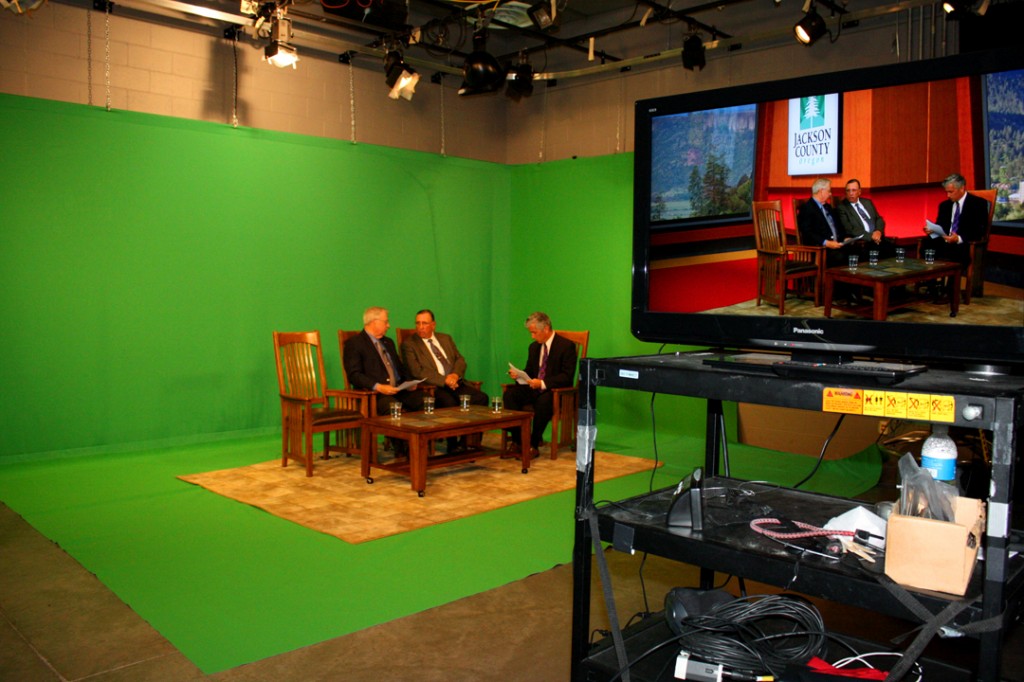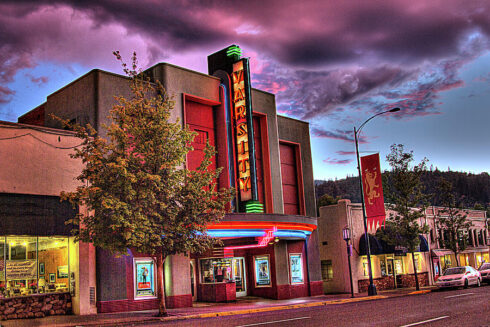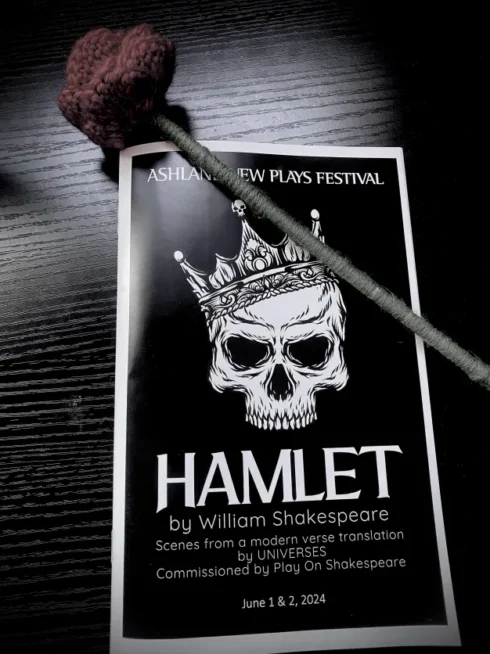ABOUT THIS SERIES: This story is part of a series in collaboration with the Ashland Daily Tidings spotlighting the work, research and experiments taking place in laboratories on the Southern Oregon University campus. During the year, these invention centers and their specialized equipment are only accessible to university students, faculty and staff. But on May 15, dozens of departmental labs and art studios will be open to the public during the fifth annual Southern Oregon Arts and Research open house. For more information about SOAR activities, performances and presentations, call 541-552-6816 or visit www.sou.edu/soar.

It’s 13 minutes before showtime and Brandon Givens is playing interior decorator.
“Let’s move that plant to the right there,” says Givens, gesturing to a large clump of fake foliage.
He eyes the set critically as his team arranges and rearranges props and adjusts cameras and lights. They’re preparing for another live broadcast on Rogue Valley Community Television, a small public-access station tucked away in a corner of the Southern Oregon University campus.
Nine minutes before air time, the show’s host, Sharon Johnson, enters through the large double doors with her guests.
They are shepherded over the bundles of cables snaking along the ground to their seats and fitted with microphones.
Givens fine-tunes the three cameras, changing angles and focusing lenses.
“Five minutes!”
One of the production crew mutters something unprintable and smiles at the host and guests.
“OK, I’m going to have everyone say your favorite color and animal when I point at you.”
The microphones are checked while each guest rattles combinations such as “red dog” and “blue cheetah.”
“Two minutes on the clock!”
The guests make small talk with the host while the crew runs around making last-minute changes.
“One minute!”
The doors close and the camera crew dons headsets and takes up position.
Floor manager Samantha Grafton begins the countdown, first with her voice, then fingers only: “Ten, nine, eight, seven, six …”
She signals the control room, which starts the show’s opening sequence. The room is dead quiet, nobody dares to breathe, let alone move. As the opening music comes to an end, the floor manager points to the host, and nods.
“Good evening,” says Johnson. “This is ‘Healthy Living,’ a program brought to you by Oregon University Extension.”
RVTV will broadcast material from any local resident for a fee of $2.50 per program, as long as it belongs to the client and it doesn’t incite a riot, advocate violence or solicit viewers to buy a product, says Givens. Otherwise, residents can air whatever they want.
Although the station does not believe in censorship, staff members do screen programs to decide whether they should carry a disclaimer or run in a later time slot, and to ensure they meet submission criteria and community standards and don’t contain anything illegal.
“Citizens have the right to put things on here,” says Givens. “We don’t editorialize it, we don’t censor it “… the bottom line is that if they are a resident and have an actual television program, we will run it.”

RVTV also rents out studio space and equipment to community members who have completed a series of classes on how use the equipment.
RVTV is known as a PEG cable access television station, with public, education and government being its three main focuses.
The station maintains five channels, three in Jackson County and three in Josephine (one is shared), and airs everything from Medford City Council meetings to community-produced gardening shows.
“We’re the C-SPAN of Southern Oregon,” says Givens. “We’re also the ‘Wayne’s World’ of Southern Oregon, and we’re the university’s television outlet.”
Some of these shows are live, such as Johnson’s OSU Extension program, while others are taped and loaded into the system to be played later.
RVTV has close relationships with SOU’s Communication, Emerging Media and Digital Arts, Art and Theater departments, offering several video production and videography classes.
Givens says that while the station may seem small compared to the operations of local TV news affiliates, it is one of the largest public-access stations in the country.
Thanks to a remodel in fall 2011, RVTV is able to host more classes. Eight classes are taught at the station this term, compared to two or three in previous years.
The remodel also included new systems and equipment, making RVTV the most up-to-date digital media lab on campus, Givens says.
He adds that the remodel allows RVTV’s clients to create programs in high definition, even though the station’s cable company doesn’t currently televise in that format.



